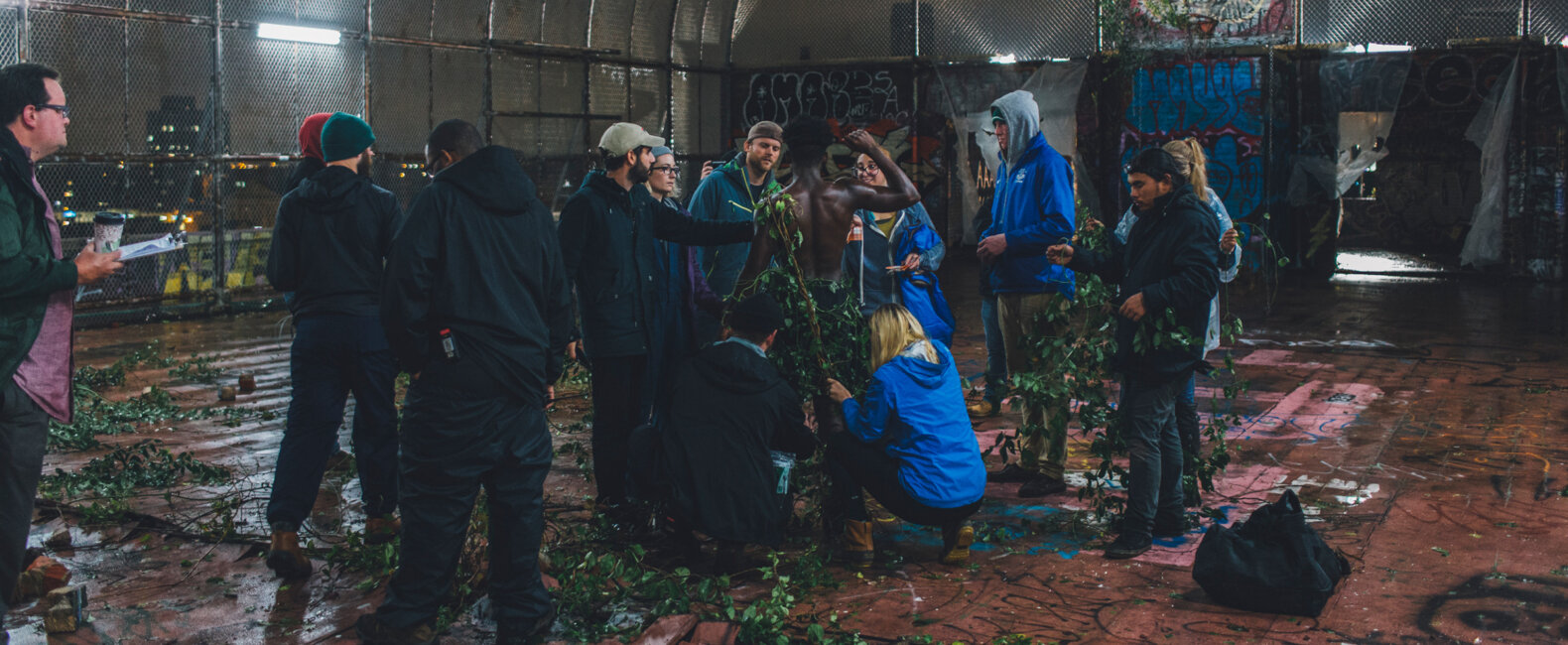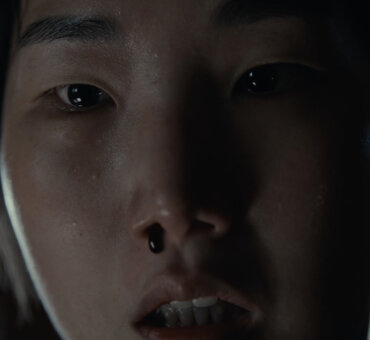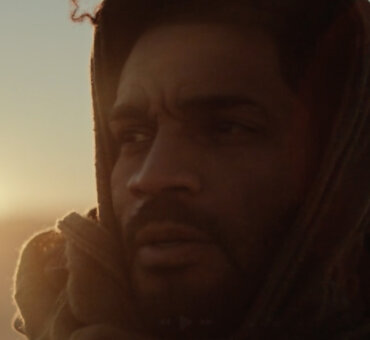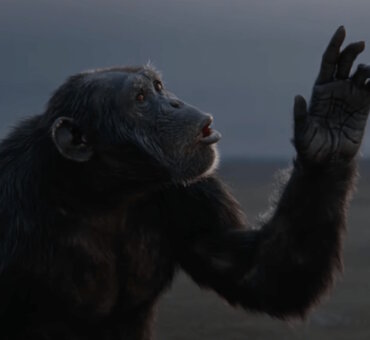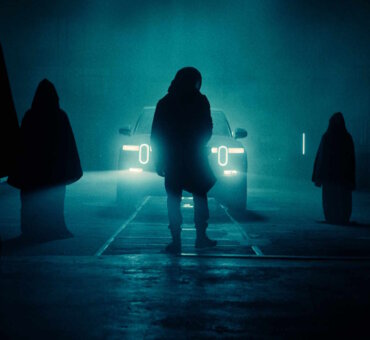At the center of Neighborhood Film Company’s The Cage — the first in our Filmsupply Films series — there is a recurring metaphor of a young man trying to break free of the seemingly malevolent vines that threaten to smother him. A young man fighting against nature. His nature, maybe. Or the nature of the place where he’s from. It’s a powerful image, and one that was only possible through the use of special effects. We talked to director Ricky Staub about how he pulled it off. (By the way, he and the Neighborhood Film Co. team will be speaking at our upcoming Film + Music Conference! To get your pass and learn more, head here.)
Filmsupply: At what point did you decide the film would incorporate this recurring visual effect sequence?
Ricky Staub: A lot of my ideas incorporate some sort of magical element. I like blending super-real narrative with magical hyperrealism. And I felt like the blend of those two styles in The Cage gave the film a unique voice versus being just a straight drama. To me, those surreal elements are what make filmmaking so cool. That’s the magic of it!
When I first started thinking about the vines, they were much more intense. And probably completely impossible to do unless I had a Marvel-sized budget. But I was in the dreaming phase, and I wasn’t sure yet if I was going to do them practically or in CG. When I started talking to Dan, my business partner, we quickly realized we were going to need some visual effects help. So I started reaching out to my contacts dating all the way back to when I was a production assistant.
One thing that helped me was I’d built a pretty extensive deck explaining exactly what I was looking for. I had some experience creating decks like that from when I’d been an assistant. I was working on these big films, and I had to create breakdowns of all the effects because 10 companies would be working on them at once. So when I was reaching out to these big producers to help me with the special effects on The Cage, I thought they might be looking for something like that. And it turned out they were. I got a great response because they were like, “Okay, you’re organized. Cool.”
What did these documents look like?
They’re descriptions of the shots, the shot numbers, the effects being done, the approach being used, the practical elements, the duration, things like that. It’s basically just a nice, organized spreadsheet. I used those documents to find a visual effects supervisor — someone who could help me prep and execute the shots, which I know nothing about. But that was okay because once I found a supervisor ⎯ an awesome guy named Jeremy Fernsler ⎯ he was like, “Don’t worry, I’ll get you through shooting and make sure whoever takes it from there will have everything they need to finish it.” That was an interesting thing for me to learn, actually. I wasn’t reaching out to someone to do the whole job. I needed someone there to supervise. To be a producer just for the visual effects. Although, funny enough, Jeremy ended up doing all the CGI work. He’d created some vines for the film The Road, and he’d done a lot of flame work on The Last Airbender. So he was very good with natural elements.
Were you able to pull off everything you’d imagined?
Actually, in the process of finding a supervisor, I met with another guy named Cedric Nicolas-Troyan who directed the last Snow White film, The Huntsman: Winter’s War. I shot him an email with my deck, and we ended up having lunch for three hours. He walked through every shot with me and told me what to cut. He said, “You want to go subtle. People’s imaginations will run wild. But if you try to do huge things and don’t knock them out of the park, you’ll regret it.” He said to go small, go subtle, because most people can’t achieve great effects on a small scale. He was like, “If you can pull off just a few small shots, it will go a long way.”
After that lunch, I rewrote the script. Originally there was a lot more of the main character struggling with the vines. They were much more violent. And then there was this big dunk at the end where he ripped away from them. But as I started paring that down, it turned into a great story choice. He starts to view the vines as not being a threat, but as a way to grow. He sees a way of being beautiful amongst your sin and brokenness. It became much more philosophical when I realized I needed to tame the approach. I think the story is much better for it. He doesn’t even beat the shot clock. Because the truth is, real growth doesn’t happen until you hit rock bottom. Basically, nothing changes in his life. He stops and looks around and realizes it’s all the same; but when you look at it differently, it can actually become quite beautiful. So in the end, the visual effects helped me drive home what was really the core of the film.
Did you get any other useful pieces of advice?
Another great piece of advice Cedric gave me was to not only imagine what I wanted, but also cut together little reels of things — to see if the style was going to work. Because once you’ve shot it, it’s shot. So I built some animatics to make sure the rhythm of everything was going to work. Literally just stick-figure storyboards cut together.
What was the experience like on set, directing for these special effects?
It was kind of scary, to be honest. I was basically trusting Jeremy and his team to say if a shot was going to work or not. And an added difficulty was that we shot on old anamorphic lenses, which have their own lens distortion. We didn’t want to lose that look and the bokeh — particularly if you look at the end shot where the flowers are blooming. That bokeh behind him is outrageous, and we couldn’t have re-created it. It would have been very apparent. Maybe not to the average viewer, but to us.
So there was a lot to be nervous about. But Jeremy would stand next to me, and I’d say, “What do you think?” And he’d say, “That should work.” Or he’d give me some advice. For example, the very first shot when the vines are growing out of the crack. We had the playback looping, and Jeremy was like, “Show me with your fingers what you’re imagining.” And it turned out we’d shot it too fast. He said, “Shoot it at half that speed.” So we’d adjust based on his feedback. It was absolutely essential having him on set. That’s one of the biggest things I learned: There’s no way to do visual effects without someone supervising.[nectar_single_testimonial testimonial_style=”bold” color=”Default” quote=”That’s one of the biggest things I learned: There’s no way to do visual effects without someone supervising.”]
What was post-production like? How involved were you?
I was a lot more involved than I expected. The way it worked was I’d sketch on top of the still frames in Photoshop or pdfToolbox with the marker tool — just scribble lines where I wanted vines. It was pretty rudimentary. And then we’d go back and forth to decide how the vines would grow. I had a very specific look in mind. I didn’t want them to look like snakes. I wanted them to look like a time-lapse vines, where they move by growing out from their tip and leave a wake of blooms. We spent a lot of time establishing that look. Then Jeremy started sending me these very crude renderings of the speed and coverage of the vines, which of course looked pretty bad. He’d always tell me, “This is not what they’re going to look like; this is just temp.” It was a painstakingly slow process.
Were some of the vines practical?
Yes. We flew out a woman named Jenn who does floral designs for high-end photography in L.A. She went around the neighborhood stripping vines off houses. Then we tested how long they could live outside of their root. Some of the vines lived through the weekend, which was a good sign. So she went out with seven PAs, and they basically harvested the neighborhood. We had buckets of water everywhere with vines hanging out of them. All of the vines on the cage were practical. All of that stuff that runs up the wall was laid in for the whole week. We had to hire a security guard because people would break into that building and tag stuff.
Is there anything you would have done differently, now that you’ve been through it?
There were a few things that didn’t turn out — primarily because we got five hours behind schedule during the shoot, which basically meant I had to cut a bunch of shots. Pretty debilitating. But looking at how it all came out. I’m so happy and proud of it. What we went for was high end, but we didn’t have the budget to test anything until the night of the shoot. So some things worked and some things didn’t. We knew it was a gamble, but I think it paid off.
Want to learn more from the Neighborhood Film Co. team? They’ll be speaking at our upcoming Film + Music Conference! For passes and more info, visit here.
Learn more about Filmsupply Presents, watch The Cage, and license the footage below.
